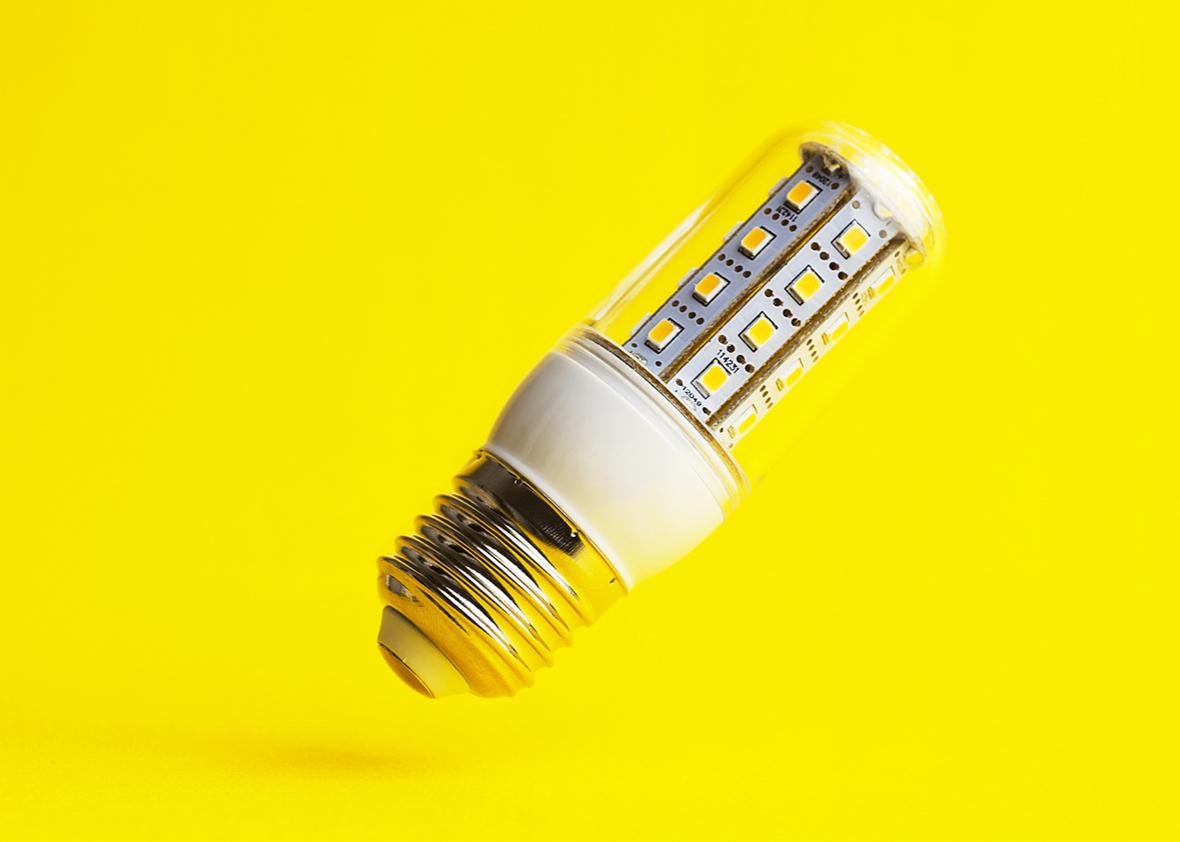We’ve become used to the rapid adoption curves of the new economy. Certainly in the software world. If 1 million people can download an app for free in a day, there’s no reason 300 million people can’t download the same one in a week. The curves become less steep when the objects being adopted cost actual money and are manufactured goods with a relatively long shelf life. But there, too, the rates can be very impressive. Quarterly sales of the iPhone went from zero in early 2007 to nearly 75 million in the first quarter of 2015.
Now something like that is happening with light-emitting diodes, or LEDs, the next-generation light bulb. General Electric, which brought the incandescent bulb to market more than a century ago, earlier this week announced that it will stop making compact fluorescent lamps, or CFLs. CFLs, first introduced in the 1980s as Light Bulb 2.0, never caught on. Last year, 30 years after their arrival, they “accounted for just 15 percent of sales” in the U.S., according to GE. So the company is stopping production of those pale replacements to focus on Light Bulb 3.0—LEDs. Last year, Americans bought a few hundred million units of them.
Until recently, consumers resisted replacing the old-fashioned filament light bulbs that Thomas Edison invented more than a century ago. Incandescents were familiar. People had grown up with the type of light they emitted. Most importantly, incandescent bulbs were incredibly cheap, in large part because companies had developed, over the course of several decades, the ability to mass-produce them with machinery. The first light bulbs produced for Edison by Corning, Inc., in the 1880s were expensive, bespoke products—blown by hand, generally at a rate of two per minute. It was only after the 1926 development of the ribbon machine, a remarkable device that could turn out up to 1,000 bulbs per minute, that incandescent bulbs became very cheap household items. (I co-wrote a book about it.)
Yes, incandescents broke easily and didn’t last long. And they were really inefficient, wasting most of the energy they produced as heat rather than light. But their very cheapness, inefficiency, and obsolescence made it difficult for new products to compete. In the 1980s, the theory was that CFLs—longer-lasting and significantly more energy-efficient—would appeal to rational homeowners. Customers would pay more upfront, but they would save money on electricity and replacements over time. But CFLs never quite happened. The high upfront cost repelled consumers. It was difficult to notice the lower electricity costs. (It’s not like the electric company breaks out your electricity use per device.) And the lighting was blah.
Adoption of CFLs was slow even though new government standards provided an impetus for change. In 2007, President Bush signed legislation that set a higher efficiency standard for light bulbs. The upshot: The manufacture of the old incandescent light bulb would have to be phased out in 2012.
In addition to pushing CFLs, manufacturers increasingly began to market LEDs. The pluses: They light up more quickly than CFLs, and provide a quality of light closer to that of incandescents, all while using 80 percent less energy than old-fashioned bulbs. The problem, of course, is that LED makers were effectively startups. They were producing a relatively new product, in very small volumes. And so the upfront cost differential was immense. As GE noted, basic LED bulbs cost between $40 and $50 as recently as 2012. Companies were asking homeowners to shell out a ton of money on an unfamiliar product and then to wait seven or eight years to recoup their savings.
This is the challenge disruptive hardware and electronics always face. The first iterations always seem impossibly expensive, elitist, and economically inefficient compared with what is already out there. They’re made in much smaller batches, so they don’t enjoy the economics of scale that mass production brings. And the incumbents are benefitting from platforms, processes, and machinery that were built up several decades before. It’s why the IBM PC cost $1,565 in 1981 ($4,080 in today’s dollars), why the cars Henry Ford built in 1903 cost more than the typical American’s annual salary, and why the first commercially available cell phone, the Motorola DynaTach 8000X, cost $3,995 in 1984.
But a familiar pattern recurs when new technologies catch on. As production volumes increase, the per-unit cost of production falls, spurring price cuts and encouraging demand. Rising demand brings more competitors into the market. When the new players sacrifice margins to capture market share, the price falls further. Next, as the products become more visible and ubiquitous, they function as their own form of advertising. Your carless great-grandfather took a ride in his neighbor’s Ford Model T and decided he couldn’t live without one. That creates more consumer demand, which further increases the volumes produced and further lures more competitors into the market.
All of this seems to be happening—and very quickly—with LEDs. As GE noted, the market share of LEDs now stands at about 15 percent, and sales more than tripled in the past year to more than 250 million units. The price has fallen precipitously. “Today, a 60-watt-equivalent LED bulb sells at Sam’s Club for $3.33,” GE notes. The company projects that the virtual circle of rising demand, rising production, and falling prices has a long way to run. Four years from now, GE projects LEDs will have a 50-percent market share in the U.S. bulb market.
In other words, things seem to be working as planned. Americans are adapting a new, highly efficient technology that will save them money, reduce stress on the power supply, and cut emissions. And to think, just a few years ago, congressmen were describing the higher efficiency standards as yet another act of consumer-harming tyranny.
